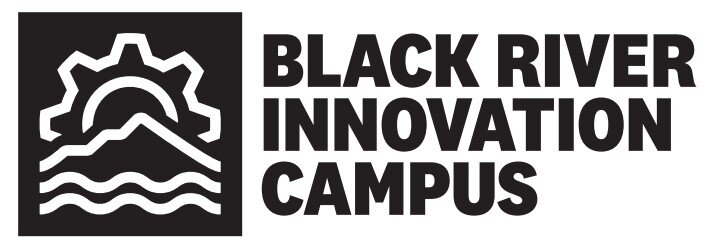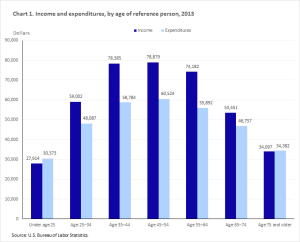
Innovation and Entrepreneurship Recommendations
To secure our economic future, The Vermont Futures Project has identified the need to scale and grow Vermont’s businesses (20 to 499 employees) through enhanced innovation and entrepreneurship. We offer the following initial recommendations for private businesses, state government, non-profits and individuals. Together, we can reach shared goals to grow Vermont’s employment base while creating dynamic business environments region to region.
Research Recommendations
- Vermont Innovation Technology Center
Establish a private sector center to boost innovations around the key Vermont sector strength of healthcare services for rural and aging in place populations. Focus on in-home support and healthcare for the aging in place Vermont population. The center will conduct cutting edge research to develop Intellectual Property and spin off new businesses to monetize the opportunities. Due to limited resources we recommend partnerships with existing groups such as the MIT and Hartford CT centers for aging support. - Economic Development through Legislative Innovation
Vermont has successfully generated additional economic benefits by being a “first mover” in several areas that fall within the 10th amendment to innovate through progressive laws. Both the Captive Insurance and Domestic Partnership laws grew to substantially increase our commerce, banking and tourism activity. The latest example is the recently passed laws around Distributed Ledger technology. We recommend that a special task force made up of key legislators, government officials, higher education and business professionals work to create a pipeline of new legislative areas to explore, develop and foster the next new industry sector to drive the Vermont economy.
Data Recommendations
- Vermont Business Innovation Guidance System
Lay the groundwork for improved coordination between startup business service providers through the adoption of an online system providing such services as a readiness tool to assess the business maturity level for both traditional businesses and startups alike. The system will focus resources and gather important data on the activities of the community while connecting startup businesses to appropriate services and funding. This would be a two-year research and development project that can be added as a resource of the Vermont Futures Project, Think Vermont and other websites. - Vermont Business Growth Data Collection & Analytics
This research will do a deep dive into the dynamics driving Vermont business growth patterns by tracing the path Vermont businesses take when receiving support, document the support they receive and measure the outcomes to determine effectiveness. The result will be insights about the factors inhibiting and enhancing growth. The research will also examine trends such as how employee ownership and commercial vs non-profit sector balance impacts Vermont economic performance. The 2-year project will work with the Innovation Guidance System project mentioned above to create an important database of data and insights about Vermont business growth dynamics.
Education Recommendations
- Entrepreneur Growth Groups
There is a need to develop improved systems to engage successful seasoned entrepreneurs with inexperienced startups in a framework that develops the next generation of leadership skills, financial management expertise and business management knowledge. The right framework will encourage a “Growth Sherpa” to mentor investments and advise on scaling businesses at a faster pace. Hold meetings at existing spaces at RDCs, Tech Centers, Co-working spaces and colleges spread throughout the state. - Celebrate Business Innovation
There is a growing knowledge gap between business leaders and the public/government around the fundamentals of businesses innovation and growth. An educational program will be created as a template for events to be held each quarter where legislators visit a business in their district to celebrate new innovations and learn how the business operates. There will be a press conference for the media and local legislators in addition to a private meeting with legislators, C-level management, owners and capital investors. These events would celebrate new innovations, recent start-ups, workforce improvements and regional successes.
Policy Development Recommendations
- Innovation Ecosystem Development
According to NSF, Vermont’s academic R&D spend has dropped by 20% in the last decade and is now below the national average and all the surrounding states. We need to restore the funding for staff to assist Vermont innovators with SBIR grants to boost the growth of innovative products and services. Some of this deficit is due to fewer grant applications as we discontinued support for grant writers. Vermont inventors are isolated in pockets throughout the state and often have spotty knowledge of Intellectual Property protection practices for patents and trade secrets. To reverse this decline we recommend funding an innovations office to capture more SBIR funding with both a research/grant writing specialist and a person to work with academic programs, labs and businesses to commercialize innovations through facilitating a network of inventors to assist them to develop IP, patenting and commercialization. - Improve Funding for Successful Growth Support Programs
There are several programs that have made an impact on the success of growing Vermont firms. Several of the Vermont business growth support programs have proven models that help scale startup firms to grow beyond 20 employees. These programs are working to grow businesses through onsite training programs and support for entrepreneur/innovation training and co-working spaces. These programs need additional funding to serve more and impact more regions such as the smaller co-working centers throughout the state. Funding could also be used to repurpose closed college campuses as business innovation training and development centers and to network the centers together in a federation of support groups to spread best practices more evenly throughout the state. - Uniform Commercial Variance Hearings
Business growth in Vermont is hampered by the process to receive variances. The length of time between requesting a hearing for a commercial property variance and actual first public hearing seems to differ wildly from town to town. Further research is needed to quantify the extent of the problem. This bottleneck suppresses business growth and can causes business flight. We recommend that this be considered as part of upcoming policy recommendations around Act 250 changes.
MORE NEWS
JOIN THE MOVEMENT
Whether you’re a large or small business, an industry or a regional leader, you can help build the Vermont of the future. Sign up below for our Building the Future Guide.



